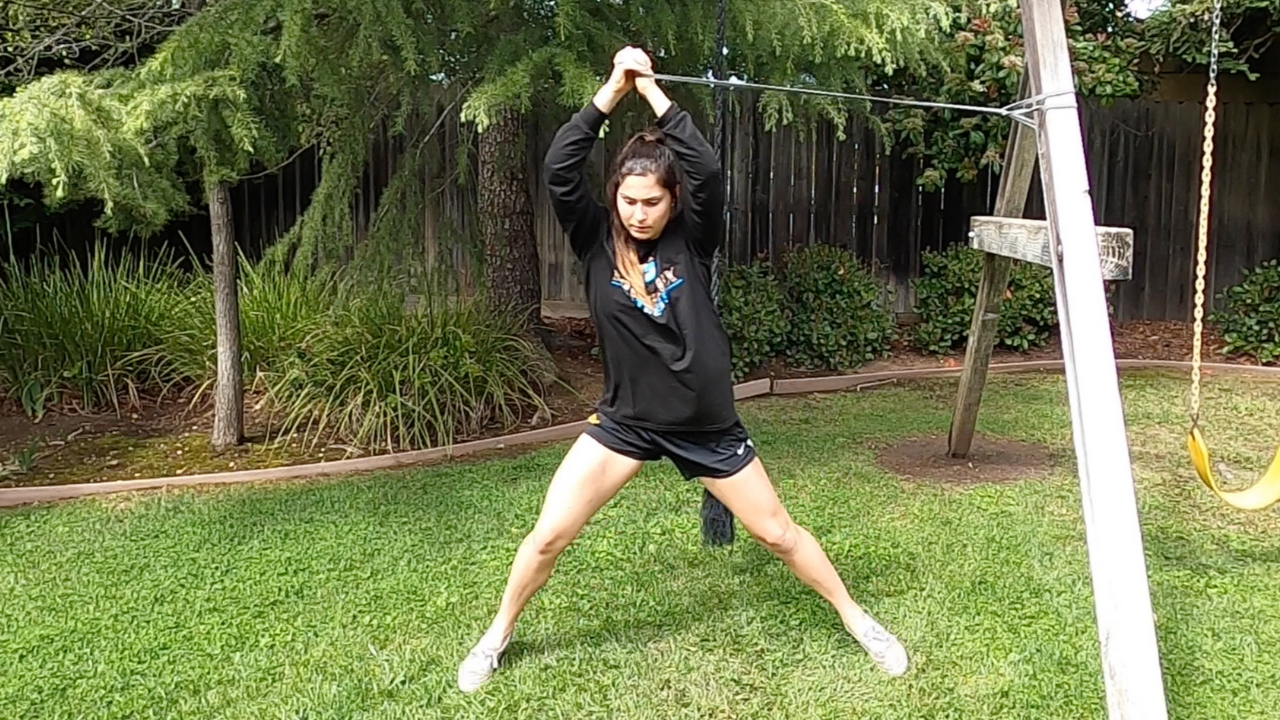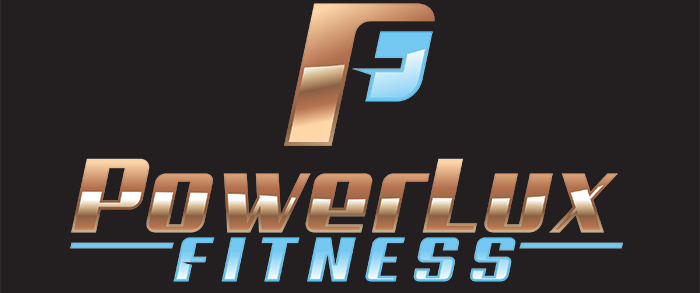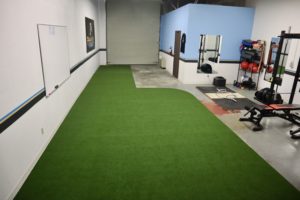
Your abs have seen nothing yet! If you want a core workout that’ll have you feeling and seeing results, look no further! With our online programs, we deliver stellar ab workouts that make people love and hate us at the same time! Click on the image above or the Programs tab to start your core transformation today!
Okay, okay okay… let’s get right to the point: who else HATES (yes, that’s capital H, A, T, E, S) when your hip flexors get in the way of your ab workout?! Like hello, do you mind? Back the f**k up hip flexors, this ain’t your party. No one invited you. And it’s always a double edged sword because your hip flexors are interrupting your ab workout due to the fact that they are stronger than your lower abs so they just naturally take over, but in doing so, you’re not able to strengthen the parts of your core that you need to in order to make your hip flexors chill… annoying, right? I know. Those bitches.
The solution to this age old problem isn’t to stop training abs or to try making your hip flexors weak then sneak attack them with strong abs. That sounds lovely in theory, however, it’s just not gonna work. It’s like me thinking I’m going to marry Zac Efron… sounds lovely in theory, but we gotta be real with ourselves. Instead, what we can do is perform certain exercises that don’t involve the use of our hip flexors and adjust other exercises to limit their involvement. While many of the common ab exercises you’re probably thinking of don’t really engage the hip flexors (e.g. planks, crunches, etc..), you’d be surprised at the number of exercises that actually do involve a majority of hip flexors. Well, you’re probably not that surprised if you’re here looking for ways to stop your hip flexors from taking over.
First things first, let’s talk about why the hip flexors are oh so rudely taking over our ab workout. That’s gonna be because of the function of the hip flexors. Their job is to stabilize the pelvis, and as we know, many of the ab exercises we do involve the pelvis to some extent, usually we end up lifting the pelvis as with leg raises. The problem is that these exercises that incorporate lifting the pelvis are the best and most effective ways at targeting the lower abs. So we can’t just cut those exercises out, or else you’d be missing a large part of core training, and you’d be limiting the advanced exercises you can do.
You know what? Enough talking. No one cares why the hip flexors are buttinskies, we just want ways to de-buttinskify them. Wow, I think I just created a new word. So here we go, the first solution has to do with a little thing called reciprocal inhibition. Reciprocal inhibition is when one muscle must relax in order for the other to contract. If we look at the bicep and tricep for example, our bicep must be fully relaxed (or stretched) in order for our tricep to be fully contracted. We can apply that same principle to our hip flexors: to relax your hip flexors, contract/squeeze your glutes. In the video below of me doing hanging leg raises, I know you can’t tell because you don’t have supersonic vision, but I’m really focusing on contracting my glutes and my abs as I bring my legs up. You’ll be shocked at how well this works!
The second thing we can do is to perform other exercises that still target our entire core, just without the use of the hip flexors. 3 examples of exercises you can do all involve a resistance band and really hit the core hard. First, we have an explosive woodchopper, or some call it an oblique twist, whatever you want, frankly no one cares. It’s the exact same thing as a woodchopper, except now you’re performing the exercise as explosively as possible, as you can see down below. When we increase the speed of an exercise, it forces our abs to have to contract that much harder in order to stop the movement’s momentum and return to the starting position.
Option 2 is doing an Overhead Walk out, where you hold the resistance band over your head (obviously one side is attached to a pole, you’re not just holding the band up lol), and you take little steps away from the band until you’re not able to go any further. Option 3 is very similar, it’s just more advanced. Instead of walking out, you’re going to be jumping out (both options are shown in videos below). The benefit of doing these 2 exercises is that it engages your entire core, including your paraspinal muscles (back muscles). If you’re not squeezing your core as tightly as possible, then that resistance band is going to yank you back to where you came from. You need to engage your entire core (lower abs, upper abs, obliques, back muscles) to properly do this exercise and to keep your arms straight up over your head.
Option number 4 is a resistance band upper crunch. Although this appears to just target the upper abs as it is a crunching motion, the fact that you’re resisting a band from pulling you backwards or turning you to the side means that way more of your abs are working than you initially thought. While it does aim to directly hit the upper abs, your obliques are firing to resist the band from turning you, the lower abs are firing to assist the obliques and to prevent you from being pulled backwards, and the back muscles are firing to help provide stabilization and support to the other muscles. This exercise looks kinda silly, but don’t knock it till you try it! Also, for extra challenge, don’t use some wimpy ass loose resistance band. Get one that isn’t very stretchy so it levels up the move.
Lastly, in addition to those 4 options, you can also perform many different plank variations that are actually beneficial to your core training. If you follow me on instagram (@powerlux_fitness), then you’ll know that I’m not the biggest fan of traditional planking. I just think it’s lowkey pointless, and there’s so many other options that are way more effective. I mean they’re better than nothing, don’t get me wrong, but yeah… not a fan. Anywhoo, these 3 variations are actually amazing exercises and require a decent amount of core strength. You can catch all 3 of the exercises in the video right below this.
Okay I totally lied. I actually have another exercise you can do that doesn’t involve the hip flexors. Goodness me, that’s like 6 exercises. It’s like Christmas! So this exercise is called gymnast abs. I wish I could take credit for the exercise, but I can’t. I got it from Jeff Cavaliere, or better known as Athlean X. As the guys from Dude Perfect say, “game recognizes game.” So Jeff, I’m borrowing your exercise because it’s just too good to pass up. Gymnast abs require having some upper body strength and a solid core foundation. You’re going to preferably need a captain’s chair to do this exercise (which I did not have at the time so I used my counter top lol). All there is to it is just basically lifting your pelvis up. I actually have no idea how to describe this exercise in a way that makes sense, so thank God for video. I guess in a sense you’re lifting your pelvis and butt up together as you lean forward just a little bit into a tucked position. You know what, just watch the video clip.
Real quickly, by no means are those 6 options I gave the only non hip flexor exercises out there. There are soooooo many exercises you can do that don’t involve your hip flexors; however, I just gave those as they show a wide variety of different types of movements. Okay, carrying on.
The third major thing we can do is limit the range of motion of our ab exercises. If you have weak abs, then at a certain point of the movement, your hip flexors are going to start to take over. This usually occurs towards the bottom of the movement, or during that lowering down phase. So if you’re able to feel exactly when your hip flexors take over the exercise, then at that moment, stop the movement and begin on your second rep. If you can’t feel when your hip flexors take over, then just think about when your legs and pelvis stop working together. If your legs are swinging but your pelvis isn’t moving much, then you’re probably using way more hip flexor than ab. If your legs are swinging up and your pelvis is tilting up with them, then you’re using your abs. In the video below, you’ll see me doing a reverse crunch into a leg lower. For the reverse crunch and initial portion of the leg lowering, my legs and pelvis are working together, moving up together, and lowering down together. But, once my pelvis is back on the ground, I can feel my hip flexors really lock in and try to help my lower abs bring my legs back down to the ground as well. It’s totally fine if your hip flexors help out a little, but it’s when they do the work for the abs that we have a problem. So, to limit the hip flexors, what we can do is to simply stop the motion once our pelvis hits the ground and our hip flexors take over.
I do think it’s very important to note that while limiting the range of motion is a great short term solution, I think it’s just that – a short term solution to a long term problem. If you really want to stop having your hip flexors take over, then you’re going to need to really work on developing your lower abs. By stopping the ROM short, you’re slightly preventing your lower abs from becoming stronger, so just make sure this isn’t the only option you’re doing. Don’t get me wrong, it’s definitely good to help build your core, but there’ll come a point in time where limiting the ROM might start to make your lower abs even weaker. The point is to just make sure to have a well balanced core workout and try to target every area so that your core is developing as a whole without furthering any weak spots.
Alrighty guys, that pretty much wraps this one up. Hopefully it was helpful in providing some possible solutions to mitigate your hip flexor domination. Make sure you’re checking out our instagram, @powerlux_fitness, and our YouTube Channel for more athletic workouts and ways to train like an athlete for the everyday person! If you’re interested in working with PowerLux Fitness, if you want programming, training, or a consultant, don’t hesitate to reach out! We have top of the line trainers with experience training professional athletes ready to help you!
Until next time, stay rad






